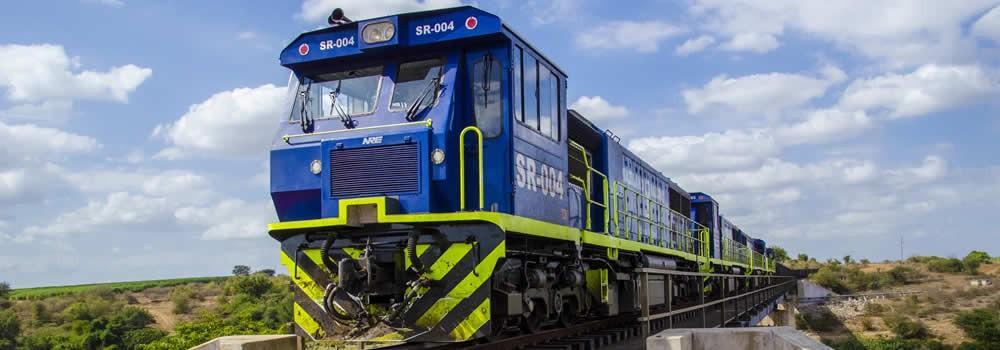Africa-Press – Eswatini. As the country anticipates the start of the Eswatini Rail Link (ESRL) project which has taken over a decade, it appears that budget limitations might derail the project even further.
This is because about E100 million is needed to conduct and complete just about 70 per cent of the resettlement exercise. This ESRL project is a multibillion development that was launched over a decade ago by the governments of South Africa and Eswatini, through its railway companies; Transnet Freight Rail and Eswatini Railways (ERS), respectively. The project, which was estimated to cost E29 billion in 2016, will include the construction of greenfield and brownfield railway lines. It will pass through 14 chiefdoms, which are under four constituencies in the Manzini Region.
affected
The constituencies to be affected are Mangcongco, Mhlambanyatsi, LaMgabhi and Ntondozi. Currently, the project is at the stage of resettling the affected communities, where many resettlements alternative sites have been prepared for the construction phase which began last year. While the start of the construction phase for the resettlement has brought hope following the long wait, the budget constraints could lead to more delays. According to a report by the Ministry of Public Works and Transport, the budget for the ongoing developments on the project was allocated in previous financial years and has been exhausted. The ministry said it has been making continuous requests for budget support for the past three financial years without success.
However, the ministry said, in the upcoming financial year 2024/2025, government has proposed an allocation of E30 million against a request of E130 million. “This budget was to take the resettlement programme to about 70 per cent completion,” reads part of the report. The ministry provided the information following queries that were raised during a debate of the ministry’s annual performance report for the financial year that ends this month. During the debate, Members of Parliament (MPs) decried that the project had taken too long, halting developments in communities. The legislators asked to know exactly the major factors causing the delay. According to the ministry, up until the last two years, the funding for the resettlement programme had not been provided until government forked out about E239 million.
The allocation of the E239 million, according to the ministry, covered at least 30 per cent of the targeted properties. A total of 98 homesteads have been constructed and ready for occupation. “The implementation of the next phase is envisaged to start in the next financial year, however, the proposed allocation will limit the scope,” the ministry said. The rail project began with the commissioning of a concept level study in 2011 to investigate the provision of a rail link between Lothair in South Africa and a suitable location along the Eswatini railway network.
A memorandum of understanding (MoU) was signed between the Government of the Republic of South Africa and the Government of the Kingdom of Eswatini in August 2012. It was followed by the signing of a subsequent MoU between TRF and ESR in November 2012 for collaboration between the organisations in assessing the feasibility of linking the two railways networks. The feasibility study was completed in July 2015. This inter-railway initiative between Transnet Freight Rail (South Africa) and Eswatini Railways entails the construction of a 146km new railway line/link from Lothair, South Africa to Sidvokodvo, Eswatini and the revamping of adjacent existing lines to align and provide support to the new link.
traffic congestion
The project is intended to be a rail and road traffic congestion solution, based on a realistic and achievable system capacity. The target is to accommodate trains of up to 26 tonnes/axle, 2.5km long/200 wagons trains and a capacity of 12 trains each way per day, in line with infrastructure interventions, thereby creating a dedicated General Freight Business Corridor for Transnet, while providing necessary additional capacity for Eswatini Railways. This growth in capacity will add to the current capacity of 12 trains of 81 wagons per day each way on the current ESR Komatipoort-Golela line that will double the traffic volume. Consequently, the ERS project will enable added capacity on general freight business. The project, which has been described by Engineering News as a joint inter-railway strategic initiative between TFR and ESR, seeks to create a dedicated general freight business (GFB) corridor for Transnet, while providing the much-needed additional capacity for ESR.
It was stated that the project entails the construction of a 150-km-long new railway link between Lothair in South Africa, and Sidvokodvo in Eswatini, including the upgrading of existing lines, one being the line from Ermelo to Lothair and the other being the line from Sidvokodvo to the logistics hub of Richards Bay, in South Africa. On the Eswatini side, the online publication reported that progress achieved, included the acquisition of seven of eight land parcels on title deed land and the relocation of some 506 graves on Eswatini Nation Land.
Engineering News mentioned that assets to be compensated have been agreed and signed for, by at least 90 per cent of project affected persons (PAPs). It was also stated that replacement or alternate resettlement sites have been secured for about 40 per cent of the PAPs. Plans for the provision of basic infrastructure, including water, roads and electricity, besides others, to resettled people were at an advanced stage with talks initiated and ongoing with utility companies.
Source:times
For More News And Analysis About Eswatini Follow Africa-Press







